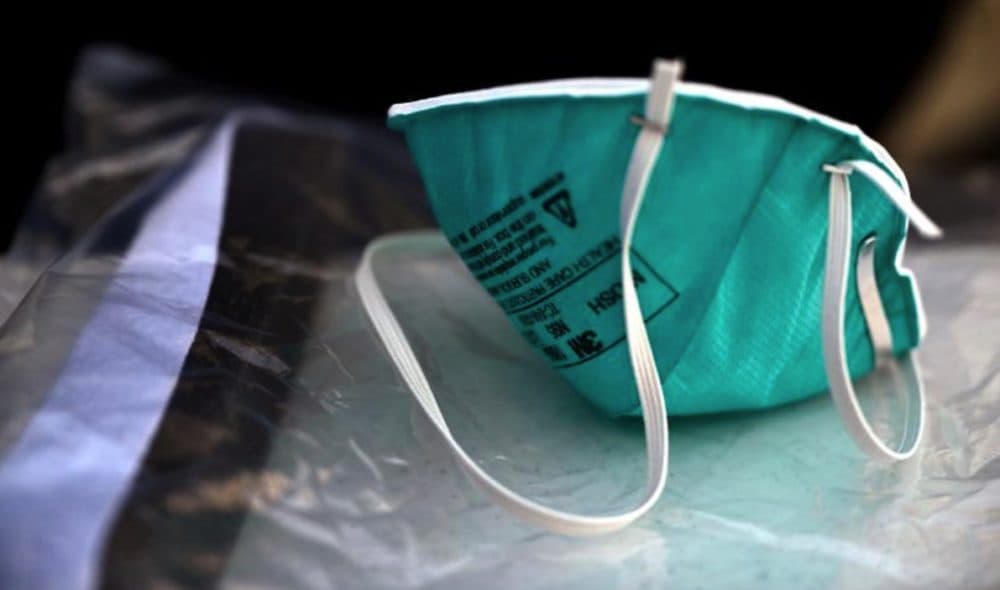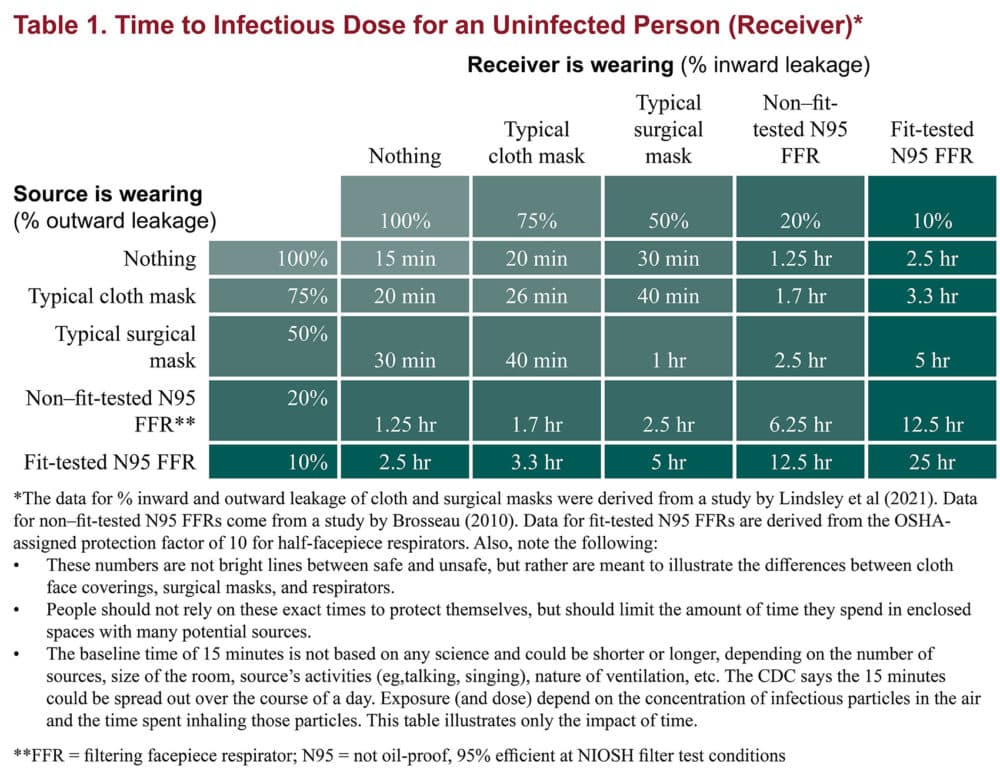Advertisement
How to get the most out of your mask — in a mask-optional world
Resume
Mandatory masking at Logan Airport and on the T is now a thing of the past. At the same time, many schools, workplaces, museums and stores have also shed their mask requirements. For those who are still wearing masks, just how good is the protection they offer from COVID? And what — if anything — can be done to improve it?
WBUR spoke to several experts to learn more about the science behind one-way masking, and how to test your own mask at home.
The Science Behind One-Way Masking
Masks are most powerful in a group setting when multiple people wear them.
Imagine there are two people in a room: one has COVID, one doesn’t. If the person with COVID is wearing a surgical mask — the type that’s often blue with pleats — research suggests it will block roughly 50% of the virus they breathe out into the air. If that other, uninfected person is wearing a similar mask, it will reduce the virus they breathe in even further, cutting their total exposure to viral particles by an estimated 75%.
But these days, fewer and fewer people are wearing masks in public places, and that means the protection that mask has to offer is not as good as it used to be.
“It's pretty clear from the science that if you wear a mask and people around you don't wear a mask, you're less well protected than if everyone wears a mask," said Jonathan Levy, chair of the Department of Environmental Health at Boston University’s School of Public Health. "Your level of protection has gone down, and your level of risk has gone up compared to how it used to be.”
Levy said this underscores the need to use a high quality mask.
Not All Masks Are Created Equal
There is a clear hierarchy in mask quality with surgical masks in the middle of the pack, and N95 masks, or respirators, at the top of the heap.
“You might get a few minutes [of protection] from a cloth face covering, and you might get a few more minutes from a surgical mask. But you can get an hour or more from a respirator,” said Lisa Brosseau, an industrial hygienist at the University of Minnesota’s Center for Infectious Disease Research and Policy.
Brosseau's research suggests that even when the seal of the mask has not been tested to make sure there are no gaps where the mask meets the face, a process known as "fit testing," the protection from an N95 may last a little over an hour for a lone mask-wearer.
Brosseau developed a chart that offers a rough estimate of how long it takes to have a COVID “exposure” if you’re next to someone who is infectious.

She admits there are some caveats to her chart, including its use of the CDC’s definition of 15 minutes for an “exposure” to COVID. That number is “not based on any science,” Brosseau said.
She also cautions that the chart does not account for differences in the concentration of viral particles in various settings. It matters whether the infectious person is singing or coughing rather than sitting quietly, for example, or if the space is well ventilated.
But however you slice the data, the clear winner is a fit-tested N95.
5 Ways To 'Fit Test' Your Mask At Home
Long before COVID, Brosseau invited 35 “untrained, inexperienced” people into her lab to put on N95 masks. What she found is that, even without guidance about how to wear the mask, the vast majority of people got at least an 80% reduction in exposure to virus particles — sometimes more.
A fit-tested mask can cut that exposure by 90% to 99%, according to Brosseau.
Hospitals fit test masks by having a person put a hood over their head. Then, a bitter substance is sprayed inside the hood. If the person can’t taste it, the mask is doing a good job at blocking particles. If they can taste it, the mask needs adjustments, or another model or size is needed.
The test is then repeated with the person doing a variety of different movements — such as talking — to make sure it can withstand the tasks of hospital life.
Most people don’t have access to this type of formal fit testing. But there are things you can do at home that will help:
- Make sure to get the right size mask.
“We are so different. Our face sizes, our noses, the length and width,” said Brosseau.
She recommends trying out a few models of N95s to see which seems to fit the best. (Pro tip for wearing an N95: one strap is supposed to go above the ears and the other goes below the ears.)
- Have a friend or relative look for gaps along the edge of the mask.
Two places to focus on are under the chin and over the bridge of the nose. This will help ensure that air isn't leaking in and out of the mask.
- In front of a mirror, suck your breath in quickly.
If you see the mask curve in slightly, that's a good sign that the air is being pulled through the filter and the mask is doing what it’s supposed to do.
- Try the glasses test.
Put on a pair of glasses or sunglasses with your mask. The lenses should not fog up. If they do, that’s an indication of gaps around your nose. Experts say this can be a particular problem with some KN95 mask designs, which are the Chinese equivalent to an N95.
- Replace your mask periodically.
Experts advise not hesitating to get a new mask. They're no longer in short supply, as they were early in the pandemic. N95s were designed to be reused, but they weren’t designed to be taken off and put back on as regularly as people do now, Brosseau points out.
The straps and nose piece can wear out, so if the mask is looking “grungy,” or you’ve been sweating a lot, toss it. The filter is unlikely to fill up before the straps give out, but if it starts to feel hard to breathe through the mask, that's another sign it's time to get a new one.
With all of these strategies, you can feel pretty confident in your mask, according to Michael Klompas, hospital epidemiologist at Brigham and Women’s Hospital, who has done a number of studies on masks.
“If you are wearing a well-fitting N95, the amount of overall blocking is so profound that your risk of getting infected is almost nothing,” he said. “Nothing's perfect, but this is about as close to perfect as you can get.”
This article was originally published on April 27, 2022.
This segment aired on April 27, 2022.
